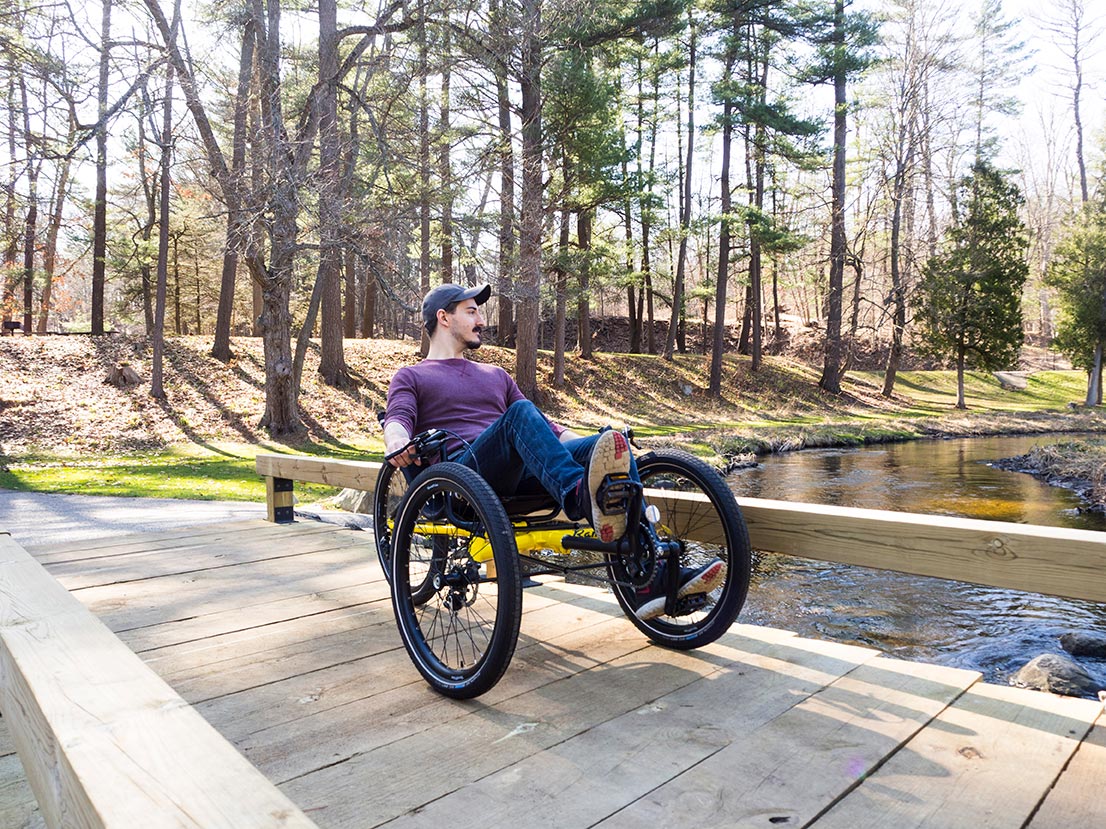
By Siegfried Mortkowitz And Originally Posted On We Love Cycling October 17, 2019
The idea of cycling while lying down was born not long after bicycles became popular in the late 19th century, for the simple reason that anything worth doing should be done as comfortably as possible – and pedalling while lying on your back would theoretically make it easier on the rider over long distances. After all, it’s like pedalling in bed.

Recumbent bikes are faster because the recumbent position creates less vertical surface for air to push against and is therefore far more aerodynamic. © mastersky / DPphoto / Profimedia
The first recumbent bike was the Fautenil Vélociped, made in France in 1893, but it and subsequent models did not stir much public interest. It wasn’t until the 1930s that recumbent bicycles drew significant attention, primarily because the French bicycle maker Charles Mochet, who manufactured several customizable models of recumbent bikes, hired professional cyclists who used his bikes to win important races, both on the road and on the track.
Mochet’s Vélo-Velocar broke several records, including fastest bicycle, fastest average speed and a number of long-distance records. However, the cyclist governing body at the time, Union Cycliste Internationale, made it illegal to use recumbent bikes in events where standard bicycles were used, which almost totally destroyed the popularity of recumbent bikes for decades.
Recumbent bicycles became popular again in the 1970s with the establishment of several sporting events that popularized this form of cycling. In 1979, the first mass-produced modern recumbent bicycle was put on sale, the Avatar 2000. This model and several of its competitors broke several records during the next 10 years, increasing the popularity of recumbent bikes around the world. In the 1980s, the first electric models were introduced, and early in this century international organizations began to admit that recumbent bicycles easily outperform upright bicycles over long distances.
However, it’s still fairly unusual to see someone cycle past you while lying on his or her back. And, if you’re like me, you wonder why people do it. Is it just because it’s easier or does riding a recumbent bike provide benefits the standard upright bike does not?
Apparently, it does. The most obvious advantage is in case of accidents. Because you are riding closer to the ground than on a standard bike, your fall will be less painful and, barring a really bad collision, the impacts will be to the lower body rather than the head. Also, because the centre of gravity is lower than on an upright bike, braking distances on a recumbent are shorter and without the risk of rear-wheel lift.
The recumbent bicycle is also much easier on the rider’s back and neck. In addition, on some recumbents the rider’s legs are at nearly the same height as the heart, which improves circulation and increases endurance and power output over long distances. Breathing on a recumbent is easier too because the rider is not bent over, as he is on a standard bike.
Riding in a recumbent position also puts far less stress on the bones, tendons, joints and ligaments because the rider’s weight is spread over a larger area (though it does put more stress on the core muscles and the hamstrings). Also, some studies have indicated that riding an upright bicycle may be a cause of male impotence because of the pressure placed on the perineal nerve by the saddle. Recumbent seats don’t have this issue.
And, finally, recumbent bikes are faster because the recumbent position creates less vertical surface for air to push against and is therefore far more aerodynamic. You don’t have to lean over the handlebars or wear specially designed helmets to cut air resistance.
But the recumbent also has a few disadvantages compared to the standard bike, the most important being visibility: it’s harder for the recumbent rider to see the traffic and the view can more easily be obscured by fences or parked cars. In addition, it’s harder for the recumbent rider to look back.
Conversely, because the recumbent rider is not upright, she is harder to see by oncoming or turning vehicles – though some riders say that being on the same level as drivers and seeing eye-to-eye with them is an advantage. To deal with this issue, many recumbent cyclists simply add colourful pennants or reflective material to their bikes to make themselves more visible.






